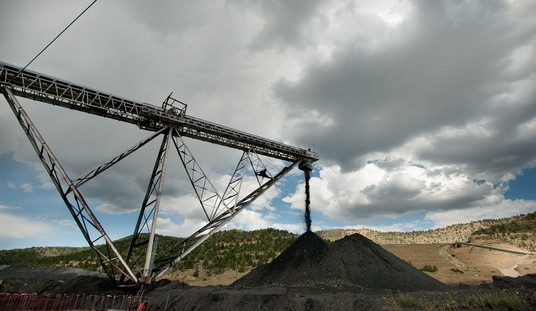Catch words these days for the favored form of energy include “green,” “clean,” “renewable,” and “sustainable” — among others. Yet nobody can quite quantify what exactly “green” means.
Examples pointed to by proponents include wind and solar, with a few pointing to hydroelectric power, biomass, and fuel cells. But those examples, and the logic behind them, fail the very definition of renewable (or clean, green, or sustainable for that matter). As the logic goes, there will always be wind, and the sun will always shine (I’ll ignore for now that wind, just like hydro power and biomass, is just another form of solar). That logic, however, is short sighted and inaccurate, because to harness that raw energy and convert it to a more useful form, we have to manufacture the means to do so, and that in and of itself is not renewable.
It appears that the hopes and dreams of proponents are for a mythical creature that cannot coexist with physical law, specifically, the First and Second Laws of Thermodynamics. The First Law, also called conservation of energy, is most familiar especially in its implication that energy cannot be created nor destroyed. We can only convert energy from one form to another, and transport it from one place to another.
Most people have far more familiarity, in terms of actual experience, with the Second Law even though it is a harder law to pin down. Basically, the Second Law dictates the direction of any changes including energy conversions. Without the Second Law, we could collect tailpipe emissions and heat rejected from our radiators and reconstitute gasoline without any net loss of energy (indeed, a truly renewable energy). That process, however, is impossible. The Second Law demands that any energy transfer or conversion is accompanied by increased disorder. It is this natural direction from order to disorder that demands a certain amount of pollution or loss in conjunction with whatever energy source we desire to use: wind, solar, coal, oil or nuclear.
In the case of “renewable” technologies, the manufacturing of the systems is where the majority of the pollution is generated. Unfortunately, that pollution is invisible to the general public. They don’t consider the effects of manufacturing when they see a wind turbine turning without a smoke stack, or a solar panel operating seemingly without environmental effect, or a hydrogen fuel cell converting electricity with water and steam appearing to be the only byproducts. This gives a false impression as to the true environmental cost of the technology.
When confronted with the revelation that systems need to be built to harness “free” energy, many people are perplexed as it is not something they have thought about. The reason, I suspect, is that the liberal media has dumbed down the science and inserted environmental propaganda in its place.
I recently had a chance to interview people attending the Rochester Earth Day Festival in Michigan. My first question: “What is renewable energy?” I followed that with a question on manufacturing the harnessing technology. Here is a compilation of the answers:
http://www.youtube.com/watch?v=aMlPwn_VIag&feature=player_embedded
Wind and solar are far and away the #1 answer. Let me just take solar as an example of what I mean by necessary pollution as dictated by the Second Law. Although there are no emissions when in operation (although it shades a swath of ground that is itself an environmental impact — which is why politicians have essentially stopped further production of large-scale solar facilities in places like Southern California), there are plenty of emissions, energy usage, and chemical waste in the production.
For example, many solar panels rely on polysilicon being manufactured in large quantities and at high quality. A byproduct of polysilicon production is silicon tetrachloride, a highly toxic substance that poses a major environmental hazard. Wherever silicon tetrachloride is dumped, the land becomes totally infertile. Even liberal outlets like the Washington Post have taken note:
“The land where you dump or bury it will be infertile. No grass or trees will grow in the place. … It is like dynamite — it is poisonous, it is polluting. Human beings can never touch it,” said Ren Bingyan, a professor at the School of Material Sciences at Hebei Industrial University. Even recycling that compound takes huge amounts of energy, itself generating its own pollution.
Farther down the production line, the gaseous compound nitrogen triflouride (NF3) is required for thin film solar cells (and “environmentally friendly” energy-efficient LCD TVs). The problem? That gas is 17,000 times more potent as a greenhouse gas than CO2. In fact, the atmospheric concentration of nitrogen triflouride has quadrupled, and according to NASA is increasing at a rate of about 11 percent per year.
Thus my point — no technology in existence, either in the real world or in someone’s imagination, is exempt from the Second Law. There will always be necessary pollution no matter the technology. It’s just that the pollution will take on different forms and exist in different places. Some pollution like that in solar technology is produced far away from where the panels operate, masking its negative impact, an impact that the MSM has been slow to report on which in turn cloaks it from a public willing to believe in fairy tales painted green.
Truly renewable energy does not and cannot exist. Some technologies are more renewable, cleaner, greener, more sustainable, but none have zero environmental impact. In my opinion, the best way to compare all technologies on a level playing field is to account for all pollution created over its entire life cycle from mining raw material through manufacturing, construction, maintenance and finally decommissioning, and weigh that against the amount of energy generated by that technology over its lifetime. In all cases, the Second Law will be there staring you right in the face. Unless, of course, Congress tries to repeal the Second Law of Thermodynamics. With those running Congress these days, it wouldn’t be beyond them to try.









Join the conversation as a VIP Member